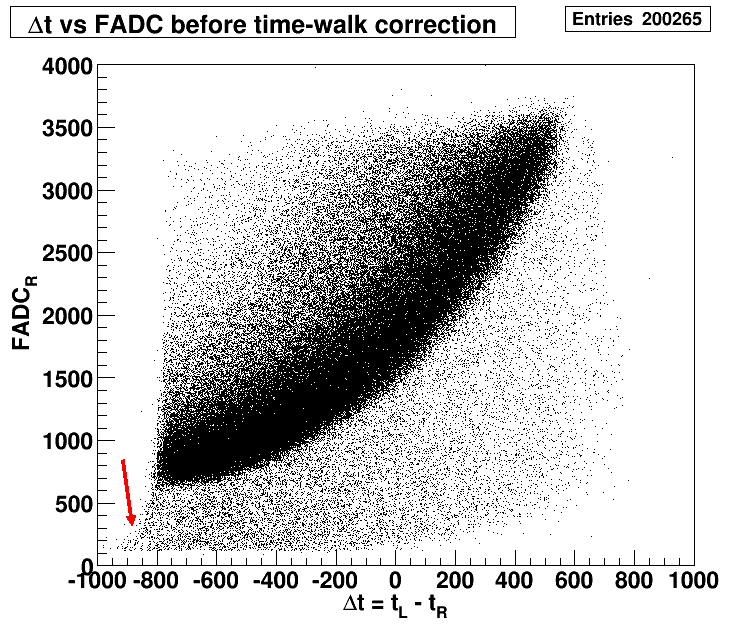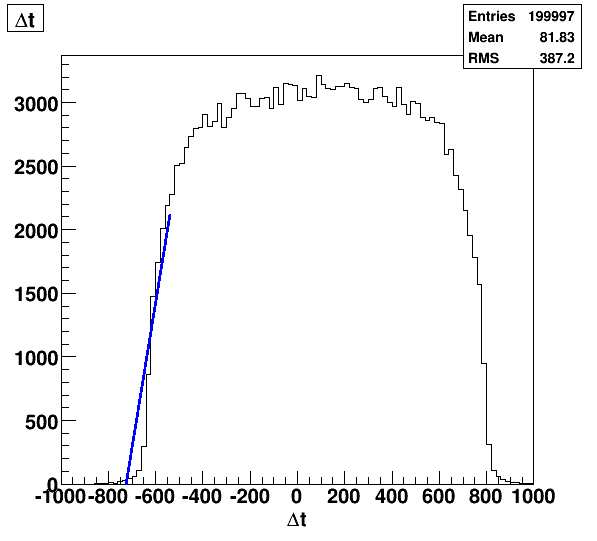Status of TOF module tests (Nov 7, 2013)
Data-taking for all 92 modules have been completed:
- The rates have been measured. All of the rates are reasonable.
- Balancing HV was done for all 84 100''-long modules. For short modules, see below.
- 200k events of cosmic data for every module have been collected. Data have
been verified to be of good quality without any obvious problems.
Two issues in the analysis of the collected data needs to be resolved before the final modules parameters
will go into the database:
- Time-walk corrections (TWC) for half-length modules still needs to be done.
- Current TWC procedure for 2-PMT modules needs to be improved (see below).
HV balancing for short modules
A standard HV balancing procedure has a goal of setting the most probable hit values to 1000
ADC counts (500 mV). When applied to the short modules, it results in HV which is about
200 V below the expected value (based on PMT gain), i.e., ~1400 V instead of ~1600 V. This
is due to the absence of small hits from the far end of the paddle. Instead of adjusting HV,
we decided to set HV for short paddles at their expected values, resulting in the
following ADC spectra (4 short paddles are in columns 2 and 5).

The plot below shows the same distribution but only for hits which are in the left 1/2 of the full 100''
length of the trigger setup. As expected, short paddles on the left (top row) didn't change; short
paddles on the right (bottom row) are gone. The puzzling part: shape of the ADC spectra in the top
row for short paddles and left PMTs of the long paddles are somewhat different: spectra for the short
paddles seems to be much narrower than the left-PMT spectra. Naively, I expected them to be the same.

Issue with TWC fit
The current procedure of TWC is to remove skewness of Delta(t) vs ADC shown with red arrow on the first plot.
The goal is to make a left egde as vertical as possible.

To achive this, the edge of Delta(t) distribution (projection of the above plot on the X axis) was fitted
with a straight line (blue line on the plot below), and minimization procedure was trying to make
this line vertical.

What I didn't realize is the effect of the trigger on the Delta(t) slope at the edges (shown on the plot below).
The triggered cosmic rays are shown in green, and forbidden rays are in red.
For paddles at the top and bottom, only half of the solid angle of cosmic rays is available. For paddles
2-5, only strictly vertical ray will trigger. In other words, hits distribution is not uniform but falls
toward the edges, creating a natural, trigger-acceptance related, slope of Delta(t). Moreover, the slope
is different for top/bottom and modules in the middle.

Therefore, fitting to a straight line is not correct.
Instead, a certain pre-defined slope has to be put into the TWC minimization fit.




